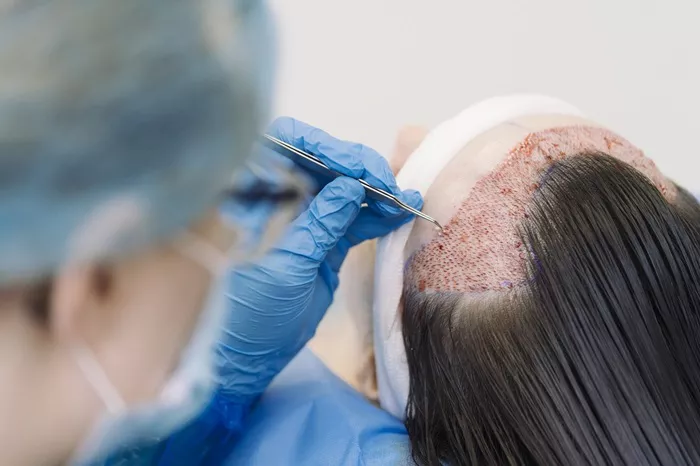Hair transplant surgery is a popular procedure for individuals looking to restore hair loss. Understanding what to expect during the recovery period is crucial. Two weeks post-surgery is an important milestone. This article provides detailed insights into what a hair transplant looks like after two weeks, including healing processes, hair growth, and overall appearance.
Understanding the Hair Transplant Process
What is a Hair Transplant?
A hair transplant involves moving hair follicles from a donor site, usually the back of the head, to the balding or thinning areas. The two primary methods are:
Follicular Unit Transplantation (FUT): Involves removing a strip of skin with hair follicles and dissecting it into individual grafts.
Follicular Unit Extraction (FUE): Involves extracting individual hair follicles directly from the scalp.
Both methods aim to create a natural-looking hairline and restore hair density.
The Immediate Post-Operative Period
After the hair transplant procedure, patients experience a healing phase. The first few days involve swelling, redness, and sensitivity around the transplant sites. Understanding these symptoms helps set realistic expectations for recovery.
What to Expect Two Weeks After a Hair Transplant
The Appearance of the Scalp
Two weeks after a hair transplant, patients often notice significant changes in the appearance of their scalp. Here’s what to expect:
Redness and Swelling
Reduced Redness: Redness at the transplant site typically begins to subside by the second week. The scalp may still appear slightly pink but should look less inflamed than in the first few days.
Swelling: Any swelling that occurred post-surgery should have significantly decreased. Some patients may still have mild swelling, particularly around the forehead, but it will likely be less noticeable.
Scabs and Crust Formation
Scabbing: Small scabs may form around each transplanted hair follicle. These are normal and should not be picked or scratched. They generally fall off within the first two weeks.
Crusts: Some crusting may remain on the scalp. This is the body’s natural healing process as it protects the newly transplanted hair follicles.
Hair Growth
Initial Shedding: Patients may experience some initial shedding of the transplanted hairs. This process, known as “shock loss,” can happen around the two-week mark. It is a temporary condition, and new hair growth usually begins within a few months.
Transplanted Hair: While some hair may be lost, the follicles remain healthy and are preparing for new growth. The hair follicles go through a cycle, with growth phases occurring later.
Sensation and Comfort Level
Changes in Sensation
Numbness and Tingling: Patients may still experience areas of numbness or tingling around the transplant sites. These sensations often improve over time as nerve endings regenerate.
Discomfort: Any discomfort or tightness from the surgery should have diminished significantly. Patients are encouraged to continue using pain management strategies recommended by their surgeon.
Overall Comfort
Hair Care Routine: By the second week, patients can generally begin to wash their hair gently. It is essential to follow the surgeon’s specific instructions regarding hair care during the healing phase.
Activity Level: Most patients can return to light activities. However, avoiding strenuous exercise and heavy lifting is advisable until cleared by the surgeon.
SEE ALSO: How Long After a Hair Transplant Can I Lift Weights?
Changes in Hair Appearance
The Look of Transplanted Hair
Hair Texture and Density
Initial Appearance: The transplanted hair may appear thinner than expected due to shedding. However, the underlying follicles are intact and will eventually produce new hair.
Hair Growth Patterns: Over the next few months, patients will notice changes in hair texture and density as new hair begins to grow.
Hairline and Natural Look
Hairline Definition: The new hairline established during the transplant should look natural. Surgeons aim to create a seamless transition between the transplanted and existing hair.
Blending with Existing Hair: As natural hair begins to grow, the overall look will improve, blending the transplanted hair with the existing hair.
Scalp and Donor Area
Healing of the Donor Site
Donor Site Appearance: The area from which the hair follicles were extracted will also show signs of healing. For FUT patients, a linear scar may be visible, while FUE patients typically have smaller, dot-like scars.
Scar Visibility: By two weeks, the donor area should look less red and start to blend in with the surrounding skin.
Overall Scalp Condition
Healthy Scalp: A healthy scalp is essential for successful hair growth. By the two-week mark, the scalp should feel less sensitive and look healthier overall.
Avoiding Infection: It is crucial to keep the scalp clean and follow post-operative care to avoid any infections that could hinder healing.
Post-Operative Care and Maintenance
Importance of Following Instructions
Following the surgeon’s post-operative care instructions is vital for successful healing and hair growth. This may include:
Gentle Hair Washing: Use a mild shampoo recommended by the surgeon.
Avoiding Direct Sunlight: Protect the scalp from sun exposure to prevent irritation and fading.
Avoiding Strenuous Activities: Refrain from high-impact exercise or activities that may lead to sweating and irritation.
Using Prescribed Medications
Pain Management: Continue to take any pain medications as prescribed to manage discomfort.
Topical Treatments: Some surgeons recommend topical treatments to promote healing and encourage hair growth.
Regular Follow-Up Visits
Follow-Up Appointments: Schedule follow-up visits with the surgeon to monitor healing and assess hair growth progress. These visits are crucial for ensuring everything is on track.
Conclusion
Understanding what a hair transplant looks like after two weeks is crucial for patients undergoing the procedure. At this stage, while the scalp may still show signs of healing, the expectations of hair growth and appearance become more evident. Patients should remain patient and follow their surgeon’s post-operative care instructions for the best results. By the end of the two-week mark, patients are on their way to a fuller head of hair and improved confidence.
The two-week milestone is just the beginning of the hair restoration journey. As new hair growth occurs, patients can look forward to achieving their desired hair goals.
You Might Be Interested In

